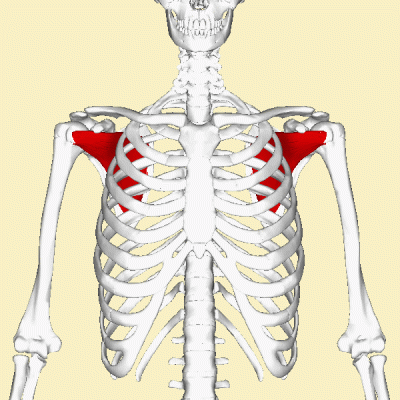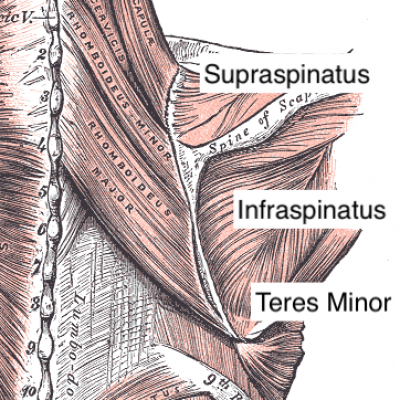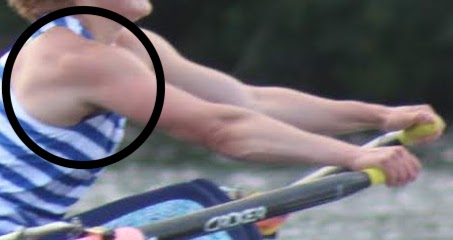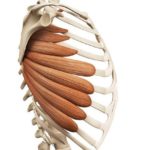

Think of the many many drills you have done and coaches love to use to work on catch placement, handle position through the recovery or even handle position at the end of the drive….there are a lot! Here’s the thing, the majority of these drills require proximal support or stability to be successful. Your coach probably has told you to sit up or keep your shoulders down more times than you can count. How do we get the coach off our backs? How do we get better control of the handle and ultimately a better connection? It’s all about building your foundation of strength! Let’s start closer to the handle, let’s tackle the shoulder/upper arm area first.
The Shoulder and the Rowing Stroke:
If you have looked at rowing technique across experience levels and sometimes age groups, shoulder position looks a lot different, why is this? You might see an extended reach and disconnected shoulder where it looks like the shoulder is about to dislocate or it seems just a bit too far from the body. You might see rounded shoulders; you might see dropped inboard shoulders or shoulders raised up towards the rower’s ears. Lots of things happen at the shoulder joint across rowers of different experience levels and age groups. Some of the changes needed for good shoulder position and connection are coaching based, but in all cases, you will not be able to hold the idea position if your shoulders are not strong enough. The technique goal is keep your shoulders down and allow the arm to reach and shoulder blade to come around your ribs as your approach the catch. We are all aiming to get the blade in and transfer power in the same way, from juniors to masters or able bodied or para, we all have the same goal, getting the blade in with the right amount of control to transfer our drive effort into efficient speed. Making your rotator cuff muscles strong will help make this change while keeping your shoulder healthy. You need to do more than just push and pull, you need more to your strength plan than just bent over rows, bench pulls and push-ups.
Injuries Related to Shoulder Stability:
Shoulder injuries are common in rowers, and for the most part, the injury occurs because the supporting muscles aren’t strong enough. A weak shoulder can cause pain in the following areas: neck, wrist, forearm, front of the shoulder, back of the shoulder, upper back, lower back and the shoulder joint itself. The main support muscles of your shoulder are your rotator cuff muscles. These muscles, subscapularis, infraspinatus, teres minor and supraspinatus (pictured above), all work together to keep your shoulder moving efficiently without too much joint separation or reliance on other structures (tendons or ligaments). The actions of these muscles are to help rotate, abduct (lift your arm from your side) and generally prevent dislocation of your shoulder joint when other larger muscles are doing their job or there is an external load placed on the shoulder (ie the drive). These muscles often get overlooked in rowing because they are not power producers. The big upper body power producing muscles are your latissimus dorsi, serratus anterior, traps and biceps. Now we all have heard of these big guys, these are where you think of getting your connection and power through your back, SO imagine how important it is for the connecting muscles to be strong enough to take this load! The power producing muscles (upper and lower body) need your rotator cuff muscles to be strong enough to transfer load from your body to the handle. Your rotator cuff muscles are not directly involved in the actions you need to row, however you need them to ‘do their job’ to allow the big movers of rowing to be effective without causing injury.
How do I work on my Rotator Cuff Strength?
With the rowers I work with: para, masters, elite and juniors alike, I ALWAYS address rotator cuff strength! I have seen rowers end up with less neck pain, less wrist or forearm pain, less shoulder pain and less low back pain just by strengthening the rotator cuff muscles. I have seen technique changes and I personally have felt better connection once I added rotator cuff strengthening into my routine. There are so many ways to do this, but here are a few videos to start with the basics. All you will need is a light weight (water bottle, soup can, ~3-5# dumbbell) and if you can be a little fancy, some resistance bands.


